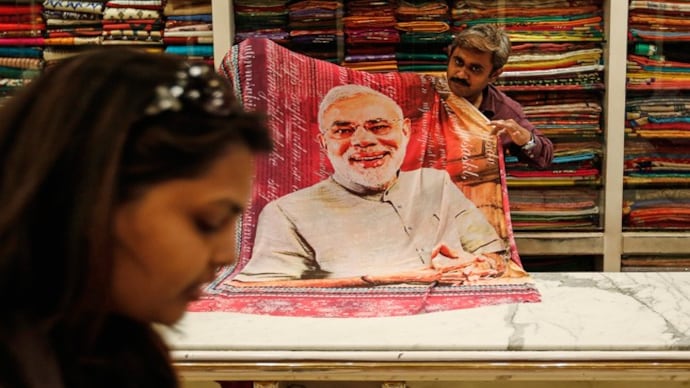Indian Twitter users roast New York Times for sari state of affairs
The New York Times thought it would be a good idea to publish an article saying "Prime Minister Narendra Modi has made traditional dress a priority and hence the fashion industry has followed along." Indian Twitter users are now roasting NYT for the article.

An article published in The New York Times titled "In India, fashion has become a nationalist cause", has not gone down very well with Indian Twitter users. The piece published a couple of days ago is now going viral on social media platforms for all the wrong reasons.
In the article, the author / reporter argues that since Narendra Modi became the prime minister of India in 2014, the Indian fashion industry and the major players have made a conscious decision to "Indianise" fashion to please the prime minister, his party and his "Hindu nationalist" ideology.
Beginning the piece saying that the "the rise of Hindu nationalist politics has become a major obstacle to realising the country's promise of growth," the author, Asgar Qadri, says that the Indian fashion industry was pressured to "aggressively promote traditional attire and bypass Western styles" by the Bharata Janata Party that rose to power in 2014.
Qadri goes on to say that PM Modi, during his election campaign in Varanasi, promised to revive the tradition of the Banarasi sari and in turn help the weavers, mostly Muslim, and that a visit to Modi's constituency made him realise that nothing has changed for the weavers, that they still live in poverty. He says that Modi's call to revive the Banarasi sari benefited the merchants in the city, though.
POOR ARGUMENTS LEFT INDIAN TWITTER FURIOUS
Indian Twitterati minced no words while slamming The New York Times article that inferred that sari has become a trend post Modi's and BJP's rise to power. While some slammed the author and the publication for suggesting that "sari is a Hindu attire", and for being clueless, some went on to say that this article is an attempt to 'communalise' Indian attire and said that the author is a Muslim.
Here are some reactions to the article -
Just read this article and laughed out loud: 'In India, Fashion Has Become a Nationalist Cause https://t.co/V5QsL0efIg'. NYT editors, sari is not a 'Hindu' dress... we wear it because it's a beautiful, versatile INDIAN garment. India is too complex for u to understand...!- rashmibansal (@rashmibansal) November 13, 2017
That NYT piece abt the sari being co opted by Hindutva is utterly dumb.
Whatever next?
A piece on how the bra is a carrier for nukes?
Hey.... might be a good story idea ??
?????????- manjula narayan (@utterflea) November 14, 2017
Before 2014, no man wore a Kurta and no woman a saree? Because this 'fashion aesthetic' is apparently part of 'pol program of Hindu nationalism' https://t.co/BUMwSZWXss- Padmaja joshi (@PadmajaJoshi) November 14, 2017
This @NYT article reminds of Modi-fied version of BBC program 'just a minute'. Here editor has given author the word 'sari'. Rules : Must be Anti Modi, 2000 words and submit in 15 minutes!- Chats (@chatur59) November 14, 2017
NYT columnist who wrote the sari article must be fired for being clueless. Banarasi sari and western luxury clothing brands dont compete coz they cant be substitute to each other.- Namrata (@_Namrataa) November 13, 2017
No wonder NYT has been called out again and again for fake news. Another attempt at linking Sari's to Hindu nationalism. Look at the name of the author, you will get a clue. It is good to stay mum when u don' t know, rather than vomiting shit.https://t.co/qLF8IouJTi- raj (@rajgrad) November 13, 2017
